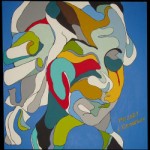 Wolfgang Amadeus Mozart represents one of the great peaks in the histor y of music. Wolfgang Amadeus Mozart represents one of the great peaks in the histor y of music.
His works, written in almost every conceivable genre, combine luminous beauty of sound with classical grace and technical perfection.
Wolfgang Amadeus Mozart began composing minuets at an early age than continued with symphonies at the age of 9.
When Wolfgang was six years old, he and his gifted elder sister, Nannerl, were taken by their father, on the first of a long series of concert tours, to all the royal courts of Europe where they delighted audiences with virtuosic performances on the harpsichord.
Of all the stopping places on Wolfgang Amadeus Mozart’s tours it was operatic Italy that gave him the greatest pleasure and recognition.
The following period proved disappointing to both father and son.
As the young Wolfgang Amadeus Mozart grew to manhood his popularity waned and he had difficulty finding employment, but the sense of his own worth carried him past the danger point.
Young Wolfgang was eventually given a position as court and cathedral organist in the household of the Archbishop of Salzburg.
Wolfgang Amadeus Mozart's career in Vienna began promisingly, and he was soon commissioned to write "The Abduction from the Seraglio" (1782).
His concerts were a great success, and the emperor, Joseph II, encouraged him, later (1787) engaging him as court composer.
In 1782 the now-popular Wolfgang Amadeus Mozart married Constanze Weber from Germany, much to his father's dismay.
The young pair visited Salzburg in 1783; there, the Kyrie and Gloria of Wolfgang Amadeus Mozart's great "Mass in C Minor", composed in Vienna and never finished, were performed.
Wolfgang Amadeus Mozart's greatest success was "The Marriage of Figaro" (1786), composed for the Vienna Opera.
The great piano concertos and the string quartets dedicated to his "dear friend" Josef Haydn were also composed during this period.
Wolfgang Amadeus Mozart's fame began to wane after "Figaro".
The nobility and court grew increasingly nervous about his revolutionary ideas as exemplified in "Figaro".
He sank into debt and was assisted by a brother Freemason, Michael Puchberg (Mozart had joined the Masons in 1784 and remained an ardent member until his death).
His greatest operatic success after "Figaro" was "Don Giovanni" (1787), composed for Prague, where Wolfgang Amadeus Mozart's art was especially appreciated. This was followed in 1790 by "Cosi fan tutte", the third and final libretto provided by the Italian poet Lorenzo Da Ponte; and in 1791 by "The Magic Flute", produced by a suburban theater in Vienna.
During this period of financial strain, Wolfgang Amadeus Mozart composed his last three symphonies ("E flat", "G minor", and the "Jupiter in C") in less than 7 weeks (summer 1788).
These had been preceded by a great series of string quintets, including the two in C and in G minor (1787).
In 1791, Wolfgang Amadeus Mozart was commissioned to write a "Requiem" (unfinished).
He was at the time quite ill - he had never known very good health - and imagined that the work was for himself, which it proved to be.
His death, on Dec. 5, 1791, which gave rise to false rumors of poisoning, is thought to have resulted from kidney failure.
After a cheap funeral at Saint Stephen's Cathedral, he was buried in an unmarked grave at the cemetery of Saint Marx, a Viennese suburb.
Much has been made of this, but at that time such burial was legally required for all Viennese except those of noble or aristocratic birth.
Wolfgang Amadeus Mozart excelled in every form in which he composed. His contemporaries found the restless ambivalence and complicated emotional content of his music difficult to understand.
Accustomed to the light, superficial style of rococo music, his aristocratic audiences could not accept the music's complexity and depth.
Yet, with Josef Haydn, Wolfgang Amadeus Mozart perfected the grand forms of symphony, opera, string quartet, and concerto that marked the classical period in music.
In his operas Wolfgang Amadeus Mozart's uncanny psychological insight is unique in musical history.
His music informed the work of the later Haydn and of the next generation of composers, most notably Beethoven.
The brilliance of his work continued until the end, although darker themes of poignancy and isolation grew more marked in his last years, and his compositions continue to exert a particular fascination for musicians and music lovers.
|